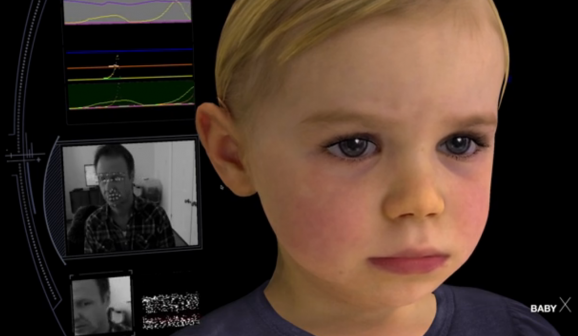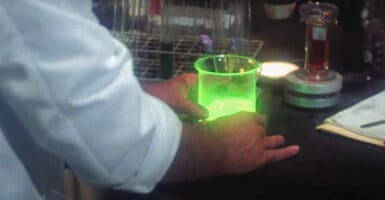BabyX: An AI That Learns Like A Toddler, Minus The Potty Training
This article is more than 2 years old
 I remember the first moment I saw real-time evidence of my niece’s developing brain. She was about three years old and asking my brother for a puzzle she wanted to play with. He started to get up to get it for her, and then paused. “Do you think you can get it yourself if I tell you where it is?” He asked her. She was up for the challenge. He gave her the directions slowly: “Go upstairs—be careful—and go into my office. Open the closet and on the second shelf on the right side you’ll see your puzzle.” She listened to him, mind almost visibly cranking away as she tried to remember and visualize these steps. After a few seconds she nodded and left the room. A few minutes later, she came back with the puzzle, beaming. I remember thinking how amazing it was to see her receive and follow a fairly complicated set of instructions, and how she’d be honing those skills for the rest of her life. The brain of a toddler, in all its glorious plasticity, is really nothing short of miraculous, so it’s not surprising to learn that researchers are using it as a model for artificial intelligence.
I remember the first moment I saw real-time evidence of my niece’s developing brain. She was about three years old and asking my brother for a puzzle she wanted to play with. He started to get up to get it for her, and then paused. “Do you think you can get it yourself if I tell you where it is?” He asked her. She was up for the challenge. He gave her the directions slowly: “Go upstairs—be careful—and go into my office. Open the closet and on the second shelf on the right side you’ll see your puzzle.” She listened to him, mind almost visibly cranking away as she tried to remember and visualize these steps. After a few seconds she nodded and left the room. A few minutes later, she came back with the puzzle, beaming. I remember thinking how amazing it was to see her receive and follow a fairly complicated set of instructions, and how she’d be honing those skills for the rest of her life. The brain of a toddler, in all its glorious plasticity, is really nothing short of miraculous, so it’s not surprising to learn that researchers are using it as a model for artificial intelligence.
A team from the Laboratory for Animate Technologies at the Auckland Bioengineering Institute is developing a virtual infant called BabyX. Like a real toddler, it can read and identify symbols, interact and respond appropriately to feedback, and make its pleasure or displeasure known via facial expressions. The purpose of this “computer generated psychobiological simulation” is to provide a platform for experimenting with “neural systems involved in interactive behaviour and learning.” The algorithms used in BabyX allow it to respond as a real toddler would For example, praise triggers something akin to a dopamine boost. But BabyX’s learning abilities are what make it particularly interesting.
Strategies such as repetition, conditioning, and imitation work to teach BabyX various skills, just as they do with real kids. While BabyX takes in data, researchers have access to an interactive model of its neural network, allowing them to see a computer simulation of the processes that fire when toddlers learn. I have to say, the videos are a little strange. First off, the researcher just calls it “Baby.” I know the thing isn’t actually alive, and perhaps personifying it would be unnecessary or even detrimental, but “Baby, look over here!” “Hey, Baby, what’s this?” just sounds weird. And Baby’s half-smile is a little off too. I do love the fact that Baby zones out and gets distracted like a real toddler, though. And when you factor in lack of diaper changes, screaming, and barfing, well then, you’ve got a pretty good kid.
I hope the researchers publish their findings regarding what they learn via the simulations. We know that toddlers’ brains are unique and enviable for their ability to absorb vast quantities of information, such as languages and even perfect pitch. If we can unlock the secrets of their neuro-plasticity, maybe can keep learning like toddlers as we age.












